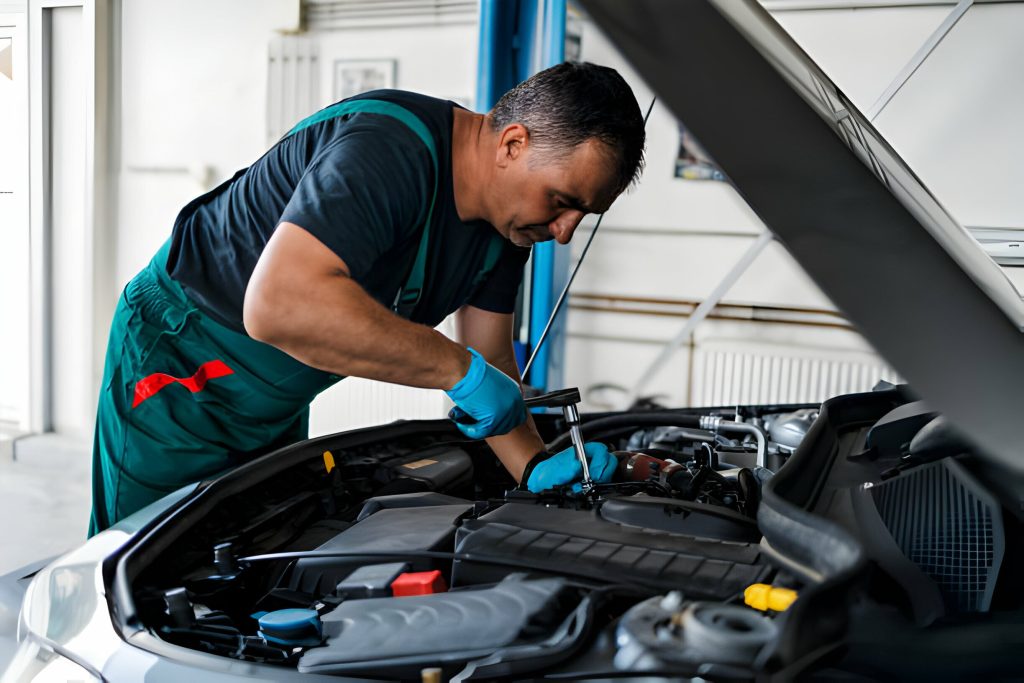In the world of automotive care, auto body repair is a vital aspect, often overshadowed by mechanical maintenance. For Australian car owners, understanding and undertaking auto body repair is not just a matter of pride in one’s vehicle, but a crucial step in ensuring its longevity, safety, and performance.
This blog delves into the significance of auto body repair, outlining the key steps involved, and offers practical tips and tricks for both beginners and seasoned car enthusiasts.

The Essence of Auto Body Repair
Auto body repair encompasses more than just cosmetic fixes. It’s crucial for maintaining the structural integrity of your vehicle, particularly in Australia’s varied climate – from the corrosive coastal air to the rugged outback. Regular auto body maintenance prevents rust, reduces wear and tear, and extends the lifespan of your car.
Steps in Auto Body Repair
Assessment and Disassembly
The first step in auto body repair is a thorough assessment of the damage. This process involves a detailed inspection to understand the extent of the damage, which could range from minor dents and scratches to major structural issues.
Once the assessment is complete, the disassembly process begins. This is a meticulous procedure where parts of the vehicle, such as bumpers, panels, and sometimes even the interior components, are carefully removed to gain full access to the damaged areas.
This step is critical as it reveals underlying issues that are not visible from the outside, ensuring that all damage is identified and addressed.
Repairing and Replacing
After disassembly, the actual repair work begins. This involves a variety of tasks based on the extent of the damage. For minor dents, techniques like paintless dent removal may be employed.
In cases of more severe damage, such as bent frames, specialised hydraulic machines and tools are used to straighten and align the vehicle’s frame to its original specifications.
If there are parts that are too damaged to be repaired, such as crumpled panels or broken fixtures, they are replaced with new components. This step is crucial to restore the structural integrity and aesthetics of the vehicle.
Surface Preparation
Once the repairs are complete, the next step is surface preparation, which is vital for achieving a high-quality finish. The repaired areas are meticulously cleaned to remove any dust, grease, or residue.
Then, the surface is sanded to create a smooth base for the paint. Sanding is done to ensure that the new paint adheres properly and matches the rest of the vehicle’s body.
Primer is then applied to protect the metal, improve paint adhesion, and ensure a uniform paint finish. This step requires a keen eye for detail to ensure that the surface is flawlessly prepared for painting.
Painting and Reassembly
The painting phase involves matching the paint colour and applying it in a controlled environment to ensure a uniform finish. Modern auto body shops use computerised systems to perfectly match the existing paint colour and texture.
After painting, the vehicle is left to dry in a dust-free, temperature-controlled setting. Once the paint is dry, the vehicle undergoes reassembly. During this phase, all previously removed parts are carefully put back in place. This step is crucial as it ensures that everything from the exterior panels to the interior components is correctly aligned and securely fastened.
Final Inspection and Testing
The final step in the auto body repair process is a comprehensive inspection and testing. This includes checking the repaired areas for quality of workmanship, ensuring that the paint finish is flawless, and verifying that all parts have been reassembled correctly.
Functional tests are also conducted to ensure that the vehicle is safe to drive. This may include wheel alignment, suspension checks, and other mechanical inspections.
The vehicle is also taken for a test drive to monitor its performance and ensure that everything is functioning as it should. This final step is vital to guarantee the safety and functionality of the vehicle post-repair.
Auto Body Work for Beginners
For novices, beginning with understanding your vehicle’s structure and familiarising yourself with basic tools and safety measures is advisable. Undertaking simple tasks such as minor dent or scratch repairs can be a good starting point. However, complex damages should typically be addressed by professionals.
Auto Body Repair Tips and Tricks
Regular Inspection
Frequently inspect your vehicle for any damage, especially after traversing harsh environments.
Quality Materials
Opt for high-quality paints and primers for durability.
Basic Skills
Acquire fundamental skills in sanding, filling, and painting through online resources or local workshops.
Rust Prevention
Regular washing and applying rust protection are crucial, particularly in coastal regions.
Professional Consultation: For complex issues, seeking expert advice is always beneficial.

Conclusion
In summary, auto body smash repair is a critical aspect of vehicle maintenance, impacting safety, integrity, and value. It’s especially significant for Australian drivers, given the unique environmental conditions. Whether you’re starting or have years of experience, understanding auto body repair processes and incorporating these tips can significantly enhance your vehicle’s condition and performance. A well-maintained vehicle is more than a mode of transport; it’s a dependable and safe journey companion.